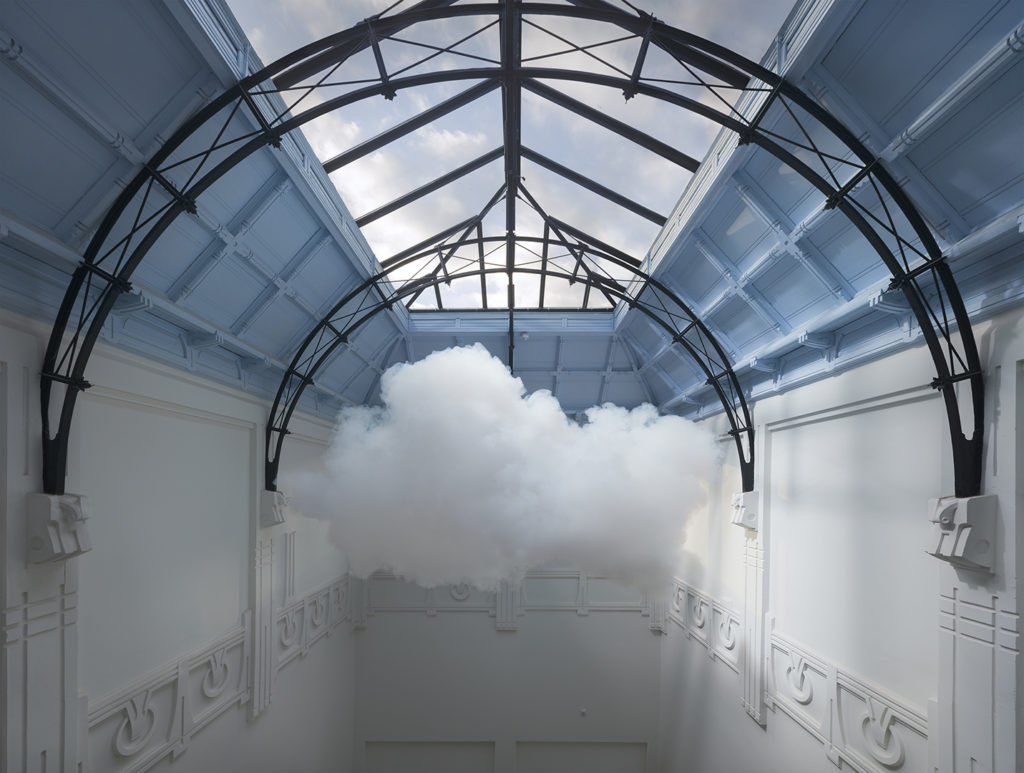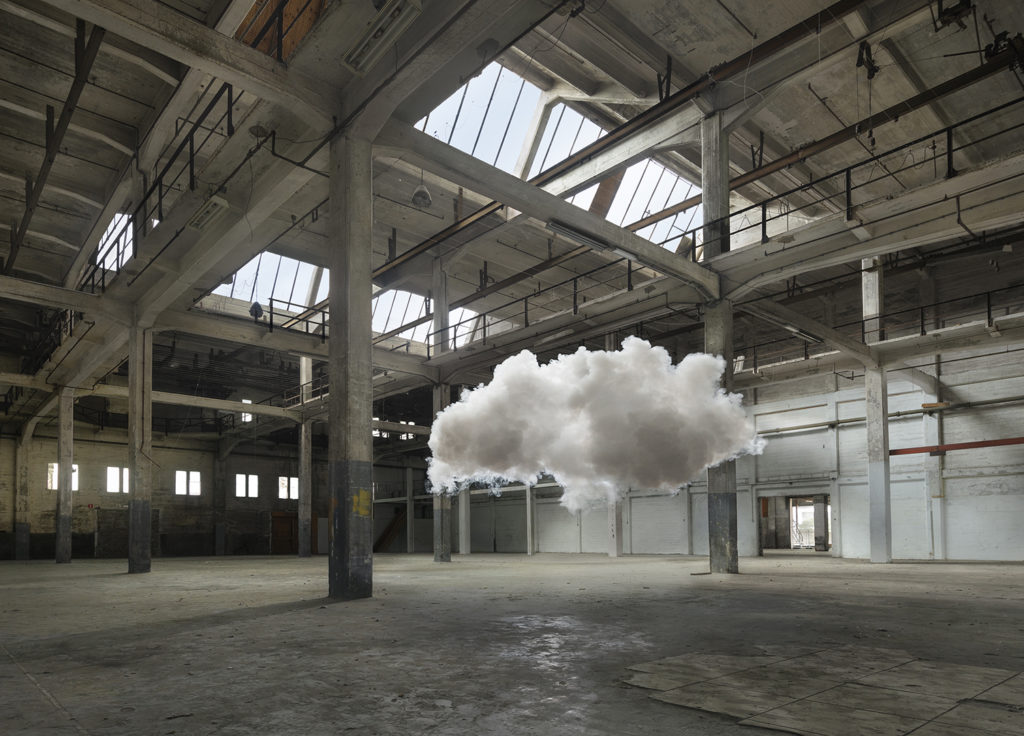Tell us what you do and your beginnings.
My work consists of installations, sculptures, and photographs. Amongst other things, I make clouds inside spaces. Initially, I wanted to study architecture. However, I soon realized that I wanted something more practical rather than technical.
Perhaps I’m a bit impatient and wanted to get building right away. So, I applied to art school and decided to become an artist. I also concerned myself with architecture artistically, mainly through painting, and this activity gradually evolved into sculptures and installations.
After my BA, I did a Master’s where I focussed more on sculpture and spatial interventions. Having worked in artist-run spaces for many years, these architectural interventions culminated in the idea of a cloud.

I see the clouds as temporary sculptures made for a specific location. Although I’m creating the work on site I’m not performing the cloud. The cloud is the actual artwork.
As the clouds aren’t durable and fall apart the moment they grow, the work is captured in a photograph which functions as a document of something that took place in a specific location and is now gone. You could say that the work is not so much the photograph itself as the scene that it evokes.
Art historian Laura van Grinsven described it very nicely, that through the photograph we are re-living the moment in our minds again making the cloud even more important in its absence than its presence.

The cloud is a great metaphor and it can change its context, and its interpretation, with each space. The old chapel at the Hotel Maria Kapel art space in the Dutch town of Hoorn where I made my first cloud, for example, emphasized the divine connotations, but in other environments, it could appear as an element escaped from a landscape painting, a thought, a concealing element, or simply an in-between state.
Continue on MuseumWeek Magazine.
